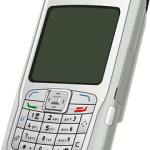
The revised Ukrainian Technical Regulation on the restriction of hazardous substances in electrical and electronic equipment enters into force on 22 September 2017. It is therefore important for all EEE manufacturers and importers to ensure that they are fully ready to comply with the new requirements imposed by the "Ukrainian RoHS". The revised Ukrainian RoHS was developed in line with the EU RoHS recast provisions subject to certain deviations.
Transitional period
Decree adopting the RoHS TR allows for a transitional period until 23 July 2019. Until this date, all EEE to which the “old” RoHS did not apply and to which the revised RoHS applies, may not be restricted from being placed on the Ukrainian market for a reason of non-compliance with the revised RoHS provisions. This does not apply to certain EEE, like medical devices and cables and spare parts intended for repair, reuse, updating of functionalities or upgrading of capacity of certain types of EEE.
Responsibilities of the manufacturer
Manufacturers are liable to ensure that all EEE they place on the Ukrainian market complies with the RoHS TR provisions.
They are also required to keep records of all equipment that is not compliant with the RoHS TR and of all incidents of product recall. They are required to inform the distributors on all product recalls.
Manufacturers must ensure that the equipment is properly marked (e.g. with the required traceability information).
There is also an obligation for the manufacturer to notify the authorities if they have any reasons to think that any EEE they placed on the market does not comply with the RoHS TR requirements. They are also required to take appropriate remediation measures, depending on the circumstances and potential risks from the alleged non-compliance.
Responsibilities of the authorised representative
The manufacturer may appoint an authorised representative (AR). The AR must perform its obligations defined by a written authorisation issued by the manufacturer. This authorisation must set out the following minimum obligations:
- To keep the declaration of conformity as well as the accompanying technical documentation for at least ten years after the date the equipment in question was put into circulation (placed on the market);
- To submit, upon request, to the market surveillance authority the information required to demonstrate conformity of the equipment with the provisions of the RoHS TR; and
- To cooperate with the market surveillance authority.
The importer’s obligations
The importers must ensure that the equipment they put on the Ukrainian market complies with the RoHS TR. Before placing EEE on the market, the importer must ensure that the manufacturer has performed the conformity assessment procedure, has provided the required technical documentation and placed the Ukrainian conformity mark on the equipment.
If the importer considers that any EEE does not or might not comply with the provisions of RoHS TR, the importer is required not to place such EEE on the market and to notify the manufacturer and the market surveillance authority.
The importer must mark EEE with its name, trade name or trademark and the contact postal address or, if this is not possible, to provide this information on the packaging or in the accompanying documentation.
The importer must keep records of all EEE they place on the market and of all cases of product recalls.
Declaration of Conformity (DoC)
The declaration of conformity (DoC) must declare that compliance with clauses 9-11 of the RoHS TR has been proved. The DoC is to be drawn up in accordance with the form provided in Annex V to the RoHS TR. It must be updated whenever required. The Declaration of Conformity must be drafted in Ukrainian language or translated into Ukrainian if it is drawn up in another language.
The wording of the RoHS TR does not explicitly provide that an EU DoC is acceptable or recognised.
National mark of conformity
The manufacturer must place the national conformity mark of Ukraine directly on the EEE or on a nameplate with the technical specifications of the equipment. The mark must be visible, clear and indelible. If this is not possible or feasible due to the nature of the product, then the national conformity mark must be placed on the packaging and the accompanying documentation.
The general principles of placing the national mark of conformity are set out by Decree No. 1184, 2015. The Decree provides for the description of the national mark of conformity and the rules of its application.
Product information and traceability
The manufacturer must mark all EEE with type, batch number or serial number or other element that will allow to identify the equipment. If this is not possible due to the size or nature of the equipment, this information may be placed on the packaging or in accompanying documentation.
Restriction of hazardous substances
The first six substances (“original substances”), such as lead, cadmium, mercury, PBB, PBDE and hexavalent chromium are to be restricted in EEE as of 22 September 2017. However, in medical devices as well as controlling and monitoring instruments these substances are to be restricted as of 1 January 2018.
For the restriction of phthalates, Ukraine will apply a transitional period and these substances are to be restricted as follows:
- As of 1 January 2018 the use of DEHP and BBP in toys, including cables or spare parts for the repair, the reuse, the update of functionality or upgrade of capacity of toys is restricted;
- As of 22 July 2019, the use of DEHP, BBP, DBP and DIBP in EEE belonging to categories 1-6, 7, 10 and 11 is restricted; and
- As of 22 July 2021, the use of DEHP, BBP, DBP and DIBP in medical devices, including in vitro medical devices and industrial monitoring and control instruments, is restricted.





